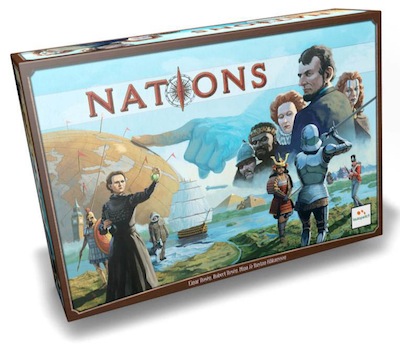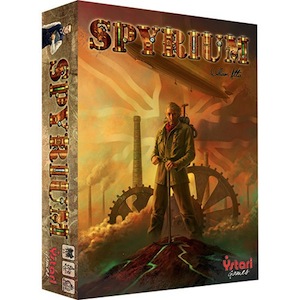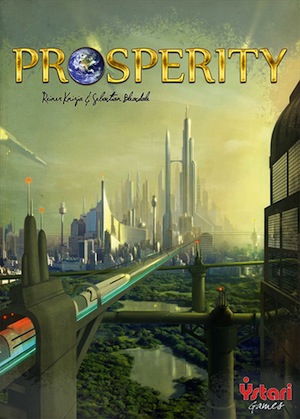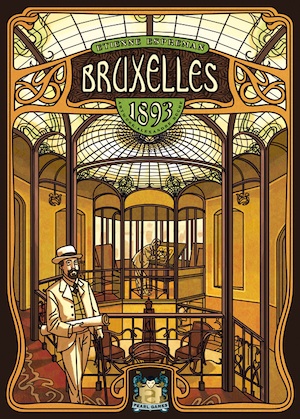Looking back, 2013 continued my trend of diving deeper in board games, both playing and designing them. It’s no coincidence that Subterfuge, the game I’m working on with Ron Carmel, has very strong board game influences. I’ll talk more in a future post about the design part, what kind of games I tried making and which ones I’m still working on. This post will focus on the best games I played that came out on 2013.I try to log every board game play, so I can see that I logged 674 different plays during the course of the year, and 246 of those were games new to me. I didn’t invent a time-expanding machine, so the time for that has come straight from TV, movies, and video games. After realizing that we were spending just about every evening playing board games, my wife an I cancelled our Netflix subscription and never looked back. I also only played a handful of PC and iOS games during the whole year.
Another good portion of those games were due to going to local game days, and to two board game conventions: Origins and BGGCon.
Having played that many games, I figured it would be interesting to write a best-of list for the year. For this one, I wanted to focus exclusive on games that came out on 2013. I played 43 games that came out on 2013, and of those, these are my favorites.
5. Nations
I absolutely love Civilization and Civ-like games. Unfortunately, for the most part, those work best on a computer due to the long play time, and the large amount of parts, pieces, and interconnecting systems. I’ve tried playing some board game versions (Through the Ages, Clash of Cultures) and while they weren’t bad, I would probably rather play the computer version of Civilization.
Nations is finally the first civilization board game that works really well for me. It has a reasonable play time (under 2 hours for 4 players), interesting player interaction without direct conflict, and a great power curve. One of the key things design aspects that allows this game to work so well is that they did away with the map (just like Through the Ages), so players can focus exclusively on advancing their civilization rather than exploring the map.

4. Bora Bora
It’s no secret that I like a lot of Stefan Feld games. I particularly like some of his earlier games (In The Year of the Dragon, Notre Dame), but I also like some of his recent ones (Castles of Burgundy). Some critics dismiss a lot of his designs as “point salads”, but I do like my veggies! Seriously, there are badly done point salads, where the things you do have little significance beyond getting you some points (Trajan fell in that category for me), and well-done points salads like Bora Bora, where you’re showered with points, but you’re also opening up new paths and possibilities with each new action. Bora Bora hits all the right buttons for me: interweaving of effects on the board, different strategies, and the sense of building something. It’s a tad long with 4 players, but it plays great with 2 or 3.

3. Spyrium
While Bora Bora is a game that hits you with its colorful game board, fancy player boards, and loads of chits, Spyrium stands in stark contrast and it manages to do with very few components: A deck of cards, a few tokens, and a minimal (almost unnecessary) central board. Spyrium is a amazing piece of design because it manages to have a very rich and deep gameplay with minimalistic components.
In spite of having so few components, Spyrium has a huge amount of variability between games. Apart from the variations from the actions other players take, there’s the order in which cards will come up, the order of events for each round, and even the tokens that go on the cards themselves (which is an extra layer of variability for those cards since it changes their cost or effect).
The key mechanic of adding or removing workers for money or the card is very innovative and fresh. It’s also a game that plays well, but very differently, at different player counts. So playing with 4 people after learning the game with 2 will cause you to re-learn everything you thought you knew about it.

2. Prosperity
Prosperity was co-designed by Reiner Knizia and Sebastian Bleasdale. While Dr. Knizia is the big name there, I’m a particular fan of Bleasdale’s earlier design, Keyflower. In spite of that, I was afraid this game was going to be a too-abstract tile-laying game not to my tastes.
Boy was I wrong! Prosperity was my surprise game of the show at BGG Con (and I played a lot of games at the con). It hits the perfect level of abstractness that you feel you’re in charge of a city, but without degenerating in a sea of details that bog the game down. It manages to hit that magical middle-weight game category, that packs a lot of very interesting decisions in a playing time of an hour or less.

1. Bruxelles 1893
Unlike other simpler games, Bruxelles 1893 presents the player with a myriad of choices. It falls a bit in the camp of a Feldian point-salad game, but where each action and choice is very interconnected to the rest of the actions and the state in the board. You want to do action A, but if you do action B before, then A will be a lot more efficient. But of course, if you do C, then B will be even more powerful. Those kind of tough choices elevate this game to the top of my 2014 games.
Bruxelles 1893 is by new designer Etienne Espreman, but with some involvement by Sébastien Dujardin, who designed my favorite board game, Troyes.

Maybe even more interesting than looking at the list itself, is to look at what those games have in common. I have fairly varied tastes in games, but all the games in this list have some strong common elements:
- Tough, interesting choices
- Themes that appeal to me (no generic fantasy or zombies)
- They play well with 2 players
- Some player interaction, but no direct player confrontation and screwage
- Play times under 2 hours
Some of my other favorite games for this year that didn’t quite make it in the top 5 were:
- Freedom: The Underground Railroad: A cooperative game (a weakness of mine) with a very strong history theme.
- Nauticus: By wonder duo Michael Kiesling and Wolfgang Kramer. I wasn’t impressed with their other 2013 release, Coal Baron, but Nauticus is a perfect middle-weight game with possibilities for clever play.
- Coup: Technically this is a 2012 release, but it became much more widely available in 2013. It’s an amazing, quick, social game of bluffing and deduction. . The love child of Resistance and Love Letter.
- La Boca: A unique spacial game that forces players to collaborate to build something they can only see from their side. You really have to experience to understand it.
- CV: A quirky dice-rolling game with delightful art where you build the life of your character. It’s mostly luck-driven, but it ends up with very memorable stories.
I didn’t play every board game released on 2013 (or even close), so take my list with a grain of salt. As a reference, these are the other games I played that didn’t make the cut: Amerigo, Bang! The Dice Game, Blueprints, Bremerhaven, Bruges, Canterbury, Caverna: The Cave Farmers, Cinque Terre, Coal Baron, Concordia, Cornish Smuggler, Francis Drake, Island Fortress, Legacy: The Testament of Duke de Crecy, Letnisko, Lewis & Clark, The Lord of the Rings Dice Building Game, The Lost Dutchman, Lost Legends, Mount Everest, Náufragos, NOIR: Deductive Mystery Game, Plunder, Quantum, Quarantine, Rialto, Rococo, Russian Railroads, Shadows over the Empire, Stone & Relic, Sushi Go!, Time ‘n’ Space, Via Appia, Viticulture.
I’m starting to think that I’m not going to like any Feld designs newer than Castles o’ Purple, so I’d swap Caverna in for Bora Bora. And I think I’d pick Russian Railroads over Bruxelles… maybe. Otherwise, I agree 100% 🙂
Great collection! I am gone try at least two. Cheers!
Wow nice games, i want to download it my PC..
Good collection of games..i really like all those games..http://www.omtechnologies.com/
Good collection of games..I really like those games..
Wonderful collection, i love to play those games. Thanks
http://www.uandmeplus.com/
Nations are great! Check out my review – http://www.boardgameking.com/reviews/nations/
Wow wonderful games. I also download to my PC.
http://www.flexasoft.com/domain-expertise/game-testing/